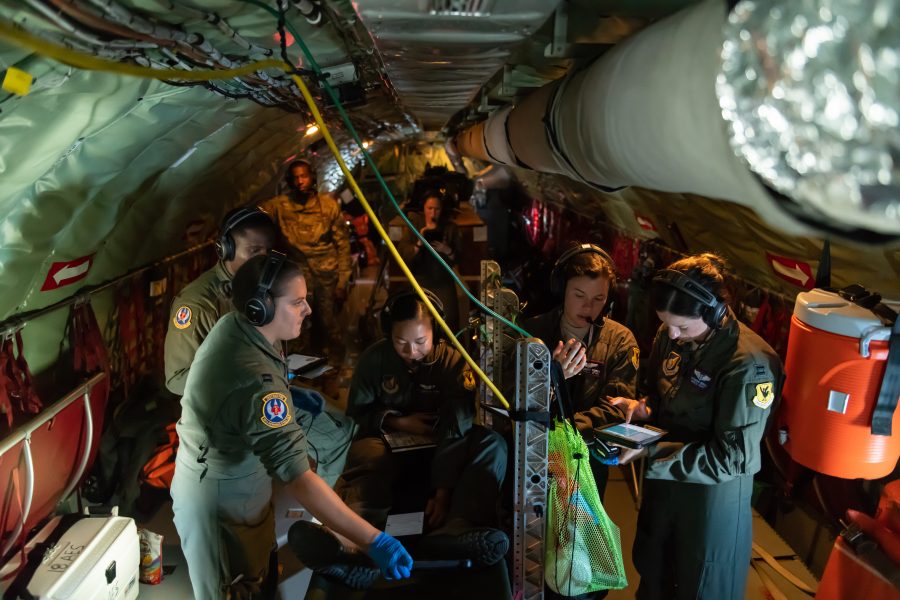KADENA AIR BASE, Japan—The 18th Aeromedical Evacuation Squadron transports patients from all over the Indo-Pacific theater, serving as an airborne hospital for newborn babies, burn victims, critical care patients, and others who need transportation. And though the COVID-19 pandemic has changed the way the entire world lives, it hasn’t stopped people from requiring other types of medical care. So the 18th AES has adapted.
One of the first things the squadron did was figure out how to provide the same level of patient care with fewer crew members, Capt. Randolph Matias told Air Force Magazine.
“We had to be innovative and learn how to operate with minimal crews,” said Matias, the flight commander for standardization and evaluation. Now, instead of bringing in additional nurses and technicians from outside the squadron for specialty care, they send squadron members with a background in that specialty, and may only send two or three people, instead of five or more.
Missions could last eight or even 12 hours, “so we have to be ready for any type of emergency that could occur in the air,” Matias said.
The squadron also cut back on the amount of equipment the crews bring onto a plane—from 12,000 pounds of gear down to just 300 pounds, Matias said.
Tech Sgt. Nicholas Evans, the noncommissioned officer in charge of mission management, said the kits were downsized after surveying the squadron to determine what they really needed. They then put together specialty kits that can be added on, he said.
The streamlining of equipment was actually something they had been planning, but had not initiated yet, explained Staff Sgt. Jesse Wieczorek, an aeromedical evacuation technician.
“It was going to happen, but it happened sooner,” he said, noting that reducing the amount of equipment and the number of people on a crew makes sense because they are no longer moving several patients at once.
“We’re still moving patients all the time, we’re still really busy, but now it’s more like onesie, twosies,” he said.
Since the stop movement order came down on March 11, the 18th AES has moved 44 patients—including critical care and Neonatal Intensive Care Unit patients—during 43 missions. None of the patients had COVID-19, though each is tested before transport. That number of patients is about typical for the time period, Matias said.
Every Airman who comes in contact with a patient, whether on the ground or in the air, also now has to follow stricter PPE and hand hygiene rules, and anyone who leaves the island of Okinawa is put on restriction of movement for 14 days when they return. That has made it even more important to reduce the number of crew members who go on each mission, so they can be sure crew members will be available when needed.
Managing travel, including permanent change of station moves, was another challenge for the squadron after the stop movement order was issued. About half of the squadron’s flight instructors are slated to move to a different duty station this summer, but other Airmen aren’t able to travel to the schoolhouse in the U.S. to be trained as instructors. So, Matias said, they decided to use guidance from the school to train new instructors in house.
Wieczorek recently finished the course, and said it is the same syllabus and training that is used at the schoolhouse, although some of the things that would normally be done face-to-face were done virtually instead.
“You still get your training, but you’re not putting yourself and others at risk,” he said.
Matias praised the squadron—which was selected as the Mobility Air Force Outstanding Aeromedical Evacuation Squadron of the Year for 2019—for its ability to adapt to accomplish the mission while protecting the Airmen, the patients, and the gear from the new coronavirus.
“COVID-19 was unexpected, We never prepared for this,” he said. But the squadron was able to “test our ability to operate with minimal resources, and it’s doable. Why would we carry 12,000 pounds of gear when we could carry 300 … and still be able to deliver quality patient care?”

